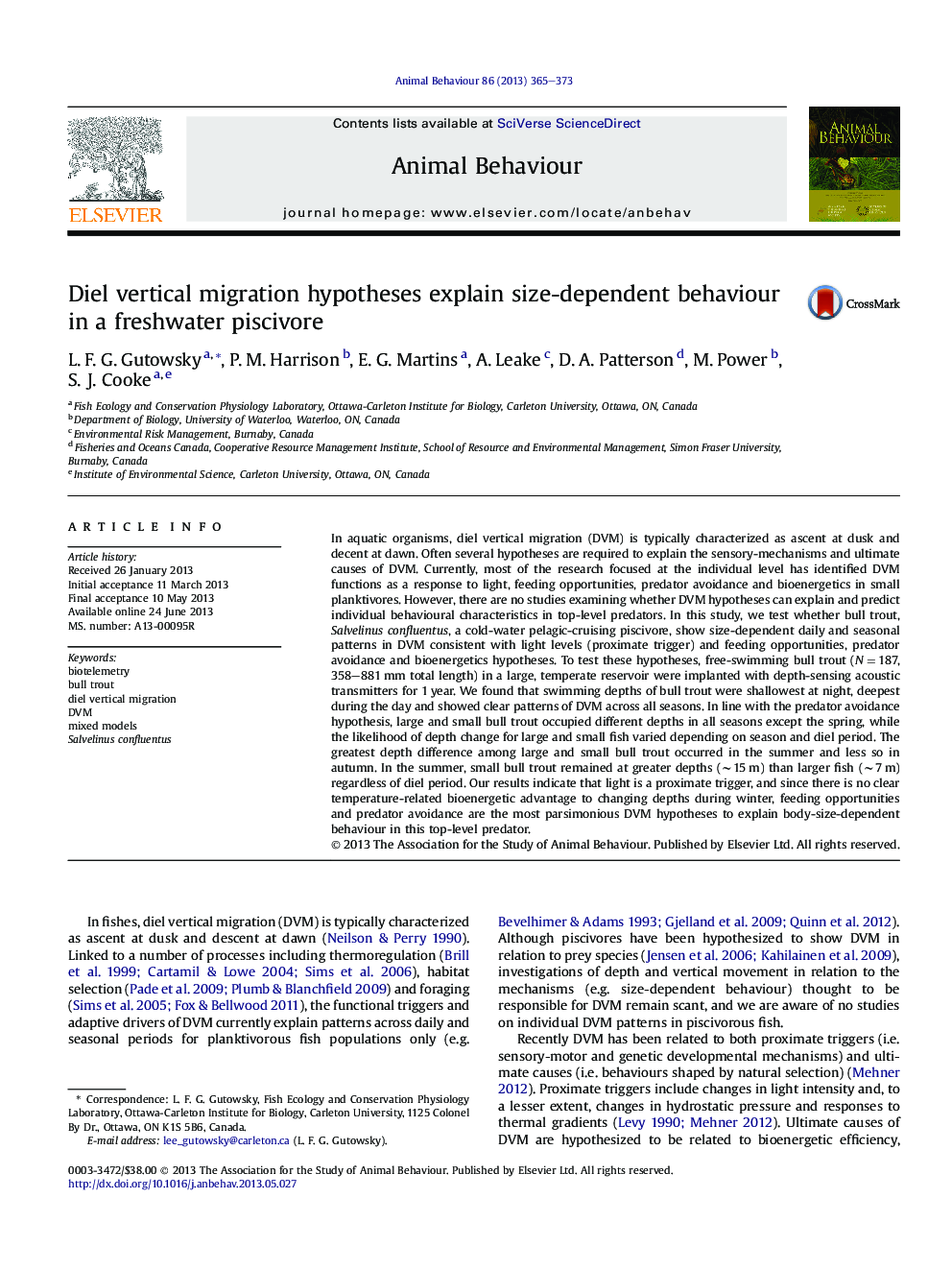| کد مقاله | کد نشریه | سال انتشار | مقاله انگلیسی | نسخه تمام متن |
|---|---|---|---|---|
| 2416602 | 1104282 | 2013 | 9 صفحه PDF | دانلود رایگان |

• We investigated individual diel vertical migration (DMV) using a freshwater piscivore.
• We modelled 1 year of biotelemetry data from 187 free-swimming bull trout, Salvelinus confluentus.
• Putative factors of DVM were diel period, season and body-size.
• Fish depths were shallowest at night and deepest in the warm seasons, and small fish were generally deepest.
• Our results suggest that light, feeding opportunities and predator avoidance explain DVM.
In aquatic organisms, diel vertical migration (DVM) is typically characterized as ascent at dusk and decent at dawn. Often several hypotheses are required to explain the sensory-mechanisms and ultimate causes of DVM. Currently, most of the research focused at the individual level has identified DVM functions as a response to light, feeding opportunities, predator avoidance and bioenergetics in small planktivores. However, there are no studies examining whether DVM hypotheses can explain and predict individual behavioural characteristics in top-level predators. In this study, we test whether bull trout, Salvelinus confluentus, a cold-water pelagic-cruising piscivore, show size-dependent daily and seasonal patterns in DVM consistent with light levels (proximate trigger) and feeding opportunities, predator avoidance and bioenergetics hypotheses. To test these hypotheses, free-swimming bull trout (N = 187, 358–881 mm total length) in a large, temperate reservoir were implanted with depth-sensing acoustic transmitters for 1 year. We found that swimming depths of bull trout were shallowest at night, deepest during the day and showed clear patterns of DVM across all seasons. In line with the predator avoidance hypothesis, large and small bull trout occupied different depths in all seasons except the spring, while the likelihood of depth change for large and small fish varied depending on season and diel period. The greatest depth difference among large and small bull trout occurred in the summer and less so in autumn. In the summer, small bull trout remained at greater depths (∼15 m) than larger fish (∼7 m) regardless of diel period. Our results indicate that light is a proximate trigger, and since there is no clear temperature-related bioenergetic advantage to changing depths during winter, feeding opportunities and predator avoidance are the most parsimonious DVM hypotheses to explain body-size-dependent behaviour in this top-level predator.
Journal: Animal Behaviour - Volume 86, Issue 2, August 2013, Pages 365–373